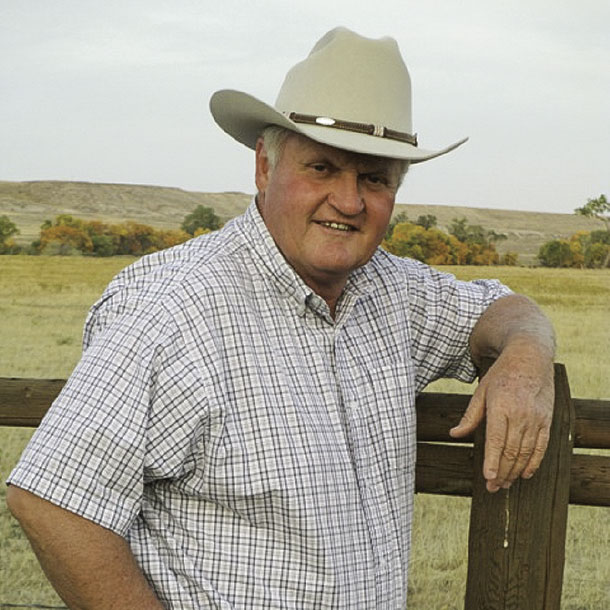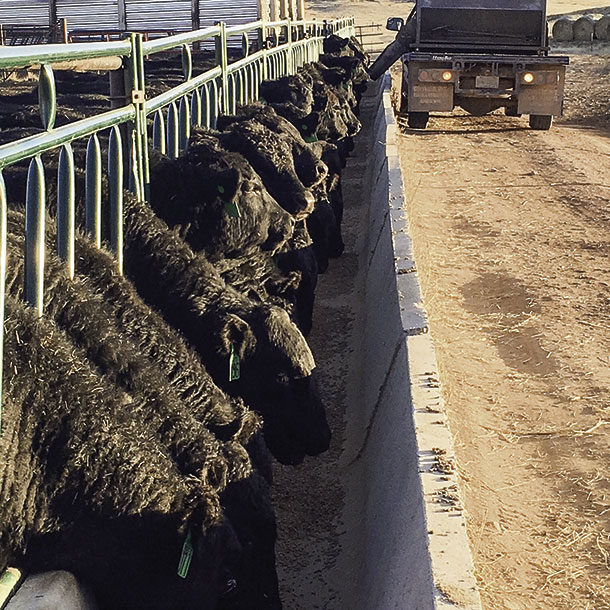 Dr. Matt Cherni. Photo provided by Matt Cherni.
Dr. Matt Cherni. Photo provided by Matt Cherni.Some cow-calf producers implant calves they plan to sell, and many don’t, but big feedlots all utilize implants, according to Dr. Matt Cherni.
“I am not a fan of implanting because of what I observed 20 years ago when I was veterinarian at the Padlock Ranch in Wyoming. We did a trial with NCBA [National Cattlemen’s Beef Association] with calves that were not implanted until they left the ranch, at which time they got one of five implant strategies, ranging from nothing all the way to four different implants by the time they were finished. The ones that received a lot of implants were unable to grade Choice,” he says.
“The Padlock cattle in the study were three-way cross British [Red Angus, polled Hereford and Shorthorn], which all should have marbled well, so we felt it was obvious that the implants had a negative effect.
“Some cattle are implanted four or five times before slaughter, and this is bound to have an adverse impact on quality.”
Keith Belk of Colorado State University published an article about the trial in the Journal of Animal Science in 2000, showing that multiple implants were detrimental to grade and tenderness.
“Another study was done at Oklahoma State University in 2014 that was similar to [a] recent Canadian study comparing the economics of keeping calves ‘natural’ versus using all the growth technology available today. The paper from Oklahoma State concluded there was no difference in the number of cattle grading Choice, but fewer cattle [were] grading Premium Choice and Prime; 36 percent were knocked out of that grading category because they were implanted,” says Cherni.
“Premium Choice and Prime are the grades that build consumer confidence, according to the 2011 Beef Quality Audit. Are we harming ourselves by using implant growth technology, even though it is beneficial for segments of our industry who are paid by the pound? What about the consumer?” he asks. Consumers have no connection to how the animal is grown and fed, but they do care how the meat tastes.
“Maybe when we think about implanting, we should ultrasound and check intramuscular fat and marbling. If certain calves don’t have genetics for marbling, we could implant them and just choose better growth,” Cherni says.
Future Beef (a concept in the late 1990s) had a plan to manage cattle from gate to plate. “The idea was to do what we could genetically and nutritionally to make beef production more efficient. They ultrasounded cattle to predict outcome, but no one is doing that anymore. I talked to a fellow who was part of that management crew, and he said it’s just too convenient to overfeed cattle now because they sell by carcass weight rather than live weight and don’t care about outcome.”
Most of the trials in the past 40 years have looked at ways to grow cattle bigger faster, not how to make them better. “Everyone likes calves that wean heavy because they bring more money, but if producers look at net profit and what it costs to wean off those big calves, it may be less than when they were weaning smaller calves.” Smaller cows actually make more money because you can run more of them on your land base and forage; they don’t eat as much, yet produce more total pounds.
“If you look at what’s going on in the cattle industry, 60 percent of the meat generates only 40 percent of the revenue. The other 40 percent generates 60 percent of the revenue. Making cattle bigger has not changed that. What’s most popular is the rib and loin; that’s where the money is. Just making cattle bigger doesn’t help with this, while making more of them does. Having more of the smaller animals helps change that revenue cycle, instead of having fewer bigger ones,” says Cherni.
Yet research and technology have been promoting bigger animals, using implants, etc. to make them bigger quicker. “It doesn’t make the meat better. Most producers don’t own calves clear to harvest; you may not know how your cattle do in the feedlot or packing plant. We need to know because we have a lot of competition coming – like fake meat. The only thing we can do is make the quality of our meat so good that people will always want it.” Most branded programs that sell prime beef do not use implants.
On the side for implants
 Dr. Larry Corah. Photo provided by Larry Corah.
Dr. Larry Corah. Photo provided by Larry Corah.Dr. Larry Corah, Kansas State emeritus professor and a consultant for Select Sires, says implant usage is something he put a lot of emphasis on when he first came to Kansas State because of the profitability of this practice. “My biggest concern today regarding implant usage is not the negative impact that implants have on quality grade but the fact the commercial cow-calf industry has backed off on utilizing implants in suckling calves,” he says.
“In earlier days, about 40 percent of cow-calf producers used implants, and in some states it was higher than that. The latest survey data indicates we’ve dropped to about 20 to 22 percent of producers who still use implants. I think cow-calf producers who don’t use implants are losing a tremendous economic opportunity by not implanting calves. That being said, implant usage in general – whether just one or multiple implants – will impact carcass quality,” says Corah.
“If calves are implanted during the feedlot phase – which is where you get your greatest economic benefit with an implant – you’ll decrease quality grade and marbling potential by about one-third of a grade. Will multiple uses, during the suckling phase, growing phase and feedlot stage have an even greater negative impact on quality?”
A Colorado State University study done by Daryl Tatum used up to five implants, starting with calves, which resulted in more extensive reduction in quality grade. “I feel that if you stick to just three implants – calf phase, growing phase and feedlot phase – the calf implant doesn’t have much additional negativity on carcass quality,” Corah says. The implant given to a suckling calf can help with weaning weights for the cow-calf producer, without much adverse effect on the final quality grade.
“When you start using four or five implants, which in this industry sometimes happens, the CSU study showed that this practice has more negative effect, particularly on higher-quality grades like Prime and Premium Choice,” he says. The cow-calf producer is paid by the pound, however, and unless he is owning the calves from birth to slaughter, he may not be as interested in the final quality grade.
“This is why so many bulls today with low marbling EPDs [expected progeny differences] are used, because there is very little economic value to the cow-calf producer for carcass quality.” The cow-calf producer prefers bulls that sire fast-growing calves with more pounds at sale time.
Thus, Corah feels it is unfortunate that the industry has backed off implant usage in the calf phase; there are a lot of missed dollars for the cow-calf producer.
Many branded beef products have gone the route of all-natural beef production, and the most highly marbled animals (Wagyu and Akaushi) don’t use implants. Those producers have slower-growing cattle and depend on a premium price for their added time and effort in raising those cattle.
“In some programs, producers manage their cattle for the natural market or the NHTC [non-hormone-treated cattle] market or the more extreme organic market. These are all niche markets, and if you go that route, it’s important that you truly capture additional dollars; you have to be paid for the loss of growth,” says Corah.
A recent study using a new long-lasting implant allowable for use with calves (shown to double the typical response to either zeranol or progesterone/estradiol benzoate) showed significant increases in suckling calf average daily gain (ADG) in implanted calves. The implanted calves were about 30 pounds heavier at weaning.
Additional research is needed to look at post-weaning growth and the impact of reimplanting, but this data reinforces previous literature that suckling calf implantation continues to be cost effective for cow-calf producers. They just need to decide which path to take, in terms of target market for their animals, whether fastest growth or higher-quality grade.









